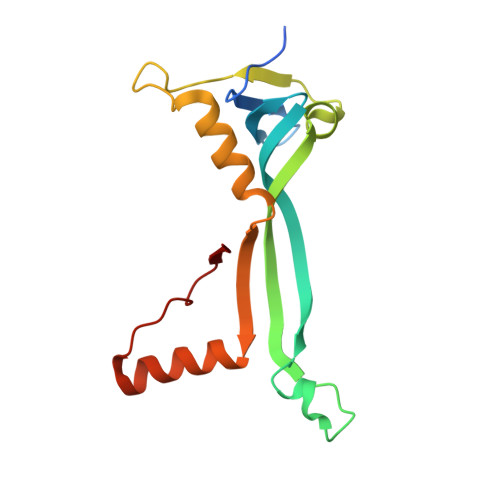LRAT-specific domain facilitates vitamin A metabolism by domain swapping in HRASLS3.
Golczak, M., Sears, A.E., Kiser, P.D., Palczewski, K.(2015) Nat Chem Biol 11: 26-32
- PubMed: 25383759
- DOI: https://doi.org/10.1038/nchembio.1687
- Primary Citation of Related Structures:
4Q95 - PubMed Abstract:
Cellular uptake of vitamin A, production of visual chromophore and triglyceride homeostasis in adipocytes depend on two representatives of the vertebrate N1pC/P60 protein family, lecithin:retinol acyltransferase (LRAT) and HRAS-like tumor suppressor 3 (HRASLS3). Both proteins function as lipid-metabolizing enzymes but differ in their substrate preferences and dominant catalytic activity. The mechanism of this catalytic diversity is not understood. Here, by using a gain-of-function approach, we identified a specific sequence responsible for the substrate specificity of N1pC/P60 proteins. A 2.2-Å crystal structure of the HRASLS3-LRAT chimeric enzyme in a thioester catalytic intermediate state revealed a major structural rearrangement accompanied by three-dimensional domain swapping dimerization not observed in native HRASLS proteins. Structural changes affecting the active site environment contributed to slower hydrolysis of the catalytic intermediate, supporting efficient acyl transfer. These findings reveal structural adaptation that facilitates selective catalysis and mechanism responsible for diverse substrate specificity within the LRAT-like enzyme family.
- Department of Pharmacology, Cleveland Center for Membrane and Structural Biology, School of Medicine, Case Western Reserve University, Cleveland, Ohio, USA.
Organizational Affiliation:

















